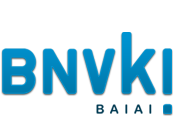As BNVKI board member who is responsible for the relationship with the industry, I often wonder what this relationship is, but in particular what it could or should be. Especially in these times where AI is on top of all the hype curves and hardly a conference comes by that does not mention the term AI in its introduction. In this short series of interviews with people from the industry I hope to shed light on the current and possible future role of the BNKVI through the lens of industry.
Today in part 1: Four visitors of BNAIC/Benelearn 2018 on their motivation for visiting this main outlet of the BNVKI and their ideas on how the conference and BNVKI could become more valuable to them.
Networking and getting insight into the current state of the art are the two main reasons why the industry visits BNAIC/Benelearn.
Hans Onvlee from ASML embodies the first goal: in his responsibility of shaping a new AI research group he is looking for good contacts. Onvlee is particularly eager to familiarize himself with the Jheronimus Academy of Data Science (JADS), where 2018 BNAIC/Benelearn is hosted. Marten Schutten from Target Holding, which could be considered an established AI group, is interested in developments in the field, but also on the outlook for new acquaintances. Schutten is in particular looking for senior AI’ers, because “we know where to find juniors and they find us, but good experienced senior AI’ers are much more challenging to find and attract.” Ramon van den Akker, de Volksbank, has as main purpose to gain knowledge and a good overview of the latest trends in machine learning (ML) so he knows which technologies are to be expected. Wan-Jui Lee from the Dutch Railways wants it all; she is looking for long-term, strong relationships with universities (e.g. through student projects) but also hopes to gain insight in new developments to fuel their strategic view on R&D and long-term research roadmap.
On day 1, already two of the four considered their visit to be successful.
Lee made a new connection for a student project and discovered specific researchers working on topics that are very relevant for her company, “So I now know who to contact!” Schutten got inspired and noted several developments down to further inspect. He also talked to new people, “who knows what will come from that.” Onvlee will consider his visit successful if he goes home with concrete leads to follow up. Van den Akker praises the open, friendly atmosphere of the conference, but misses the state-of-the-art overviews on specific topics.
The industry would like the conference to cover topics more comprehensively.
The current setup of the conference is based on paper presentations. For people coming from industry this is not the easiest way to boost their knowledge level. Onvlee would like key-note speakers to discuss their topic at a higher level of abstraction, so that the audience gets a good overview of their field and its maturity level. With the same goal in mind Schutten proposes longer, more in-depth talks, so there is time to really learn about a particular topic, e.g. Explainable AI. Similarly, Van den Akker would welcome sessions that last half a day on dedicated topics, like Transfer Learning, Anomaly Detection, or AI and Ethics / GDPR. While Lee suggests the introduction of panel discussions to think about common problems, e.g. Scheduling, and discuss the best approach towards them.
Networking / match-making sessions would be applauded.
Van den Akker mentions that his proposed half-a-day sessions could also function as a means to get to know people with similar interests. Also Lee suggests to put people with similar interests in one room and to match researchers that are application-oriented with companies that have relevant data, applications or research questions. One way of doing that could be the formulation of specific challenges by companies that researchers can subscribe to. Onvlee thinks that practical problems faced by industry, like data drift, could also provide interesting research directions for academia. The general sentiment was that such sessions should not be limited to the conference but could be organized as separate events.
What could the BNVKI do for you? (In a world without limits ;))
Van den Akker would like the BNKVI to give out a journal or organize a lecture series for AI MSc/PhDs working in industry. Goal would be to keep them up-to-date with developments in the field but in particular to provide a critical reflection, i.e. give attention to the downsides of the real-world application of new techniques or approaches. Onvlee is positive about the “round-tables” organized by JADS and thinks such initiatives could be supported and act as a platform to stimulate collaboration between academia and industry. Also Schutten would like the BNVKI to strengthen the industry-academia connection. He comments that current AI studies pay little attention to real-world applications and that students would benefit from a closer collaboration with industry to learn about the relationship between what they get taught and its impact in the real world. Lee concurs that many students and researchers do not know how complex real-world problems are. She suggests BNVKI could organize company visits to help create relationships. And last, she would welcome a simple means to spread an internship position to all students of AI.
I like to thank the four interviewees. Although from different industries in size and domain, certain commonalities in their answers stand out. I will take these with me and investigate whether they can be applied in the organization of BNAIC / Benelearn 2019.
